Written by: Eeman Amjad
Posted on: October 15, 2013 |  | 中文
| 中文
Outside of Shigar Fort
When the heat and humidity of the monsoon season combine to irk the human body, and the pressure of urban life antagonizes the human soul, there is a panacea in the north of Pakistan’s region of Baltistan. The city of Skardu, which is about an hour’s flight from Islamabad is a gateway to a region that is best described by its austere mountains and dramatic landscape. The breathtaking scenery is complimented by the centuries of history and tradition that is preserved in the area.
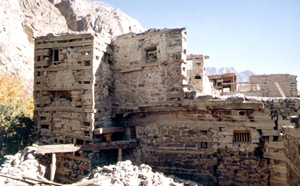 |
| Shigar Fort before restoration |
In 1999, the Raja of Shigar donated his land to the people of his village. Four centuries of the Amacha Dynasty emblematized in the grand Shigar Fort was relinquished to the public. The Agha Khan Cultural Services (AKCS) undertook the venture to rebuild the four hundred year old fort, which had dilapidated due to weather and time. It took five years with a cost of $1.25 million to renovate the building that included the old fort and the garden house (which had served as the Raja’s residence since the past forty years). To sustain the fort and create revenue for the villagers, a guesthouse run by Serena Hotel was opened there in 2005. Thirteen historic rooms in the old fort and seven modern rooms in the garden house were open for the world. The concept behind the venture was to introduce “responsible tourism”, promoting the village culture, economy and traditions, and also to promote environment sustainability.
Fruits from the large orchard are served to the guests; from sunset to sunrise people lounge across the large lawn, drinking tea and nibbling on zerchoon (local biscuit); and behind the stonewall, you can hear the rush of the stream flowing towards the Shigar River. In the morning, just as the sun rises, you can sit out on the terrace and watch as the sun spreads across the barren Karakoram Mountains, and view the clouds descend and cover the high peaks of the mountains.
The historic rooms have been preserved in their original form, with minute attention to preserving the wooden carvings and decor, which is why each room is unique. From the main porch of the Fort, the destructed centuries old Buddhist Fort is visible, which is situated at a higher peak. Stories are told of how Shah Jehan sent an army to destroy the Buddhist stronghold, to help place the Muslim Amacha dynasty in power.
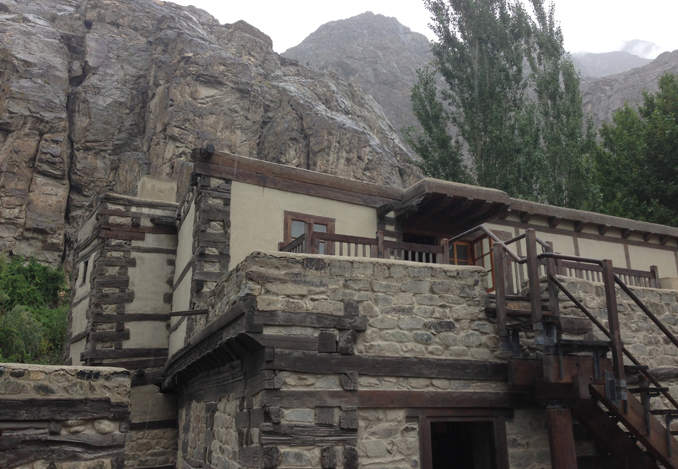 |
| Shigar Fort |
After the success of the Shigar Fort, the Raja of Khaplu, whose palace had similarly crumbled with age, sold his property to the Agha Khan Foundation. The Palace, was once again resurrected, as both a large museum and a guesthouse. The museum is located on the two floors of the palace, and the top floor, with the view of the entire Khaplu valley, has been constructed as six suites. The rest of the rooms are located in the horse stables, which open up to the small fruit orchard. Two takhtshave been placed near the wild flowers in the garden and shade is provided by apricot trees that often send down fresh apricots. Lunch is served on the Raja’s balcony where he once addressed the people of his village. The palace integrates the architectural style of the Central Asian, Kashmiri and Balti traditions. As you lie on the takth outside your room, smelling the fresh flowers and plucking apricots from the fruit trees you can see the magnificence of the Yabgo Dynasty.
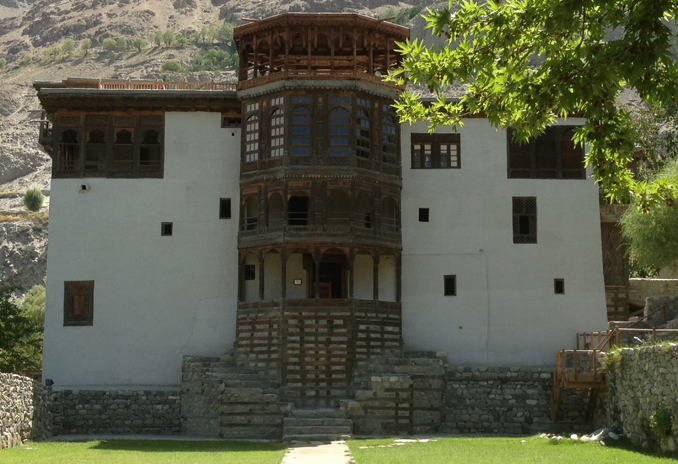 |
| Khaplu Palace |
These restorations, although a source of tourism for the locals, serve a greater purpose. Not only are they non-profit hotels (as Serena only receives one per cent of the revenue, most of the money is spent on sustaining the historic buildings and the rest is spent on the community, on projects such as their schools), but they they serve as a sense of reminder of the rich and diverse culture of Baltistan. They tell the story of the influx of Sufis from Iran, the spread of Shi’ism in the region and the peaceful Buddhist regimes that existed before. Baltis value their history and nature; the renovated palaces are only a glimpse. Walking around the village of Khaplu you can visit a seven hundred year old wooden Khanqah, and some of the other Khanqahs that have beautifully coloured wooden ceilings; and waiting outside them are the custodians of these religious sanctuaries, most of whom are deaf and mute.
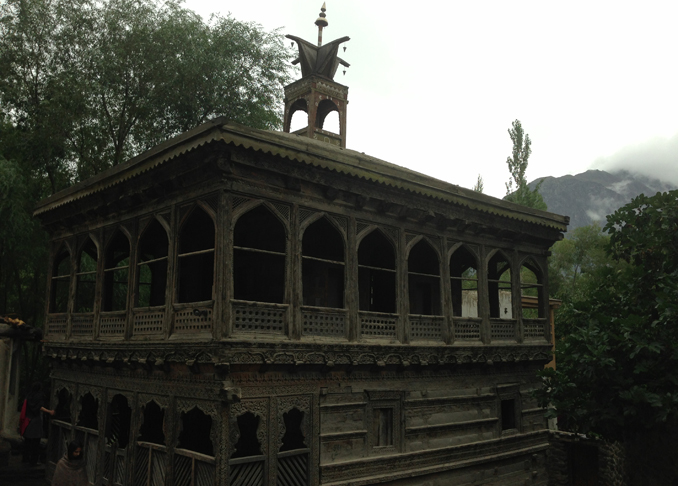 |
| Wooden Khanqah |
The ability to not speak and hear is a growing problem in the region. This is why a man named Afzal Rasool opened up a small deaf and dumb school called “Narjis Khatoon School”, to help the growing number of deaf children in the area. The school is small enough to fit only fifteen people, which is why they have to take shifts. It has a beautiful garden, and just like all other houses in the area, is resplendent with fruits such as green apples, sour cherries, and apricots. The deaf children, along with their families are taught sign language, and some classes are for those who need speech therapy. The problem is that most of the villages are far apart, the transportation costs are high, and due to the lack of funds, most deaf children are still deprived of the help they need. Afzal Rasool is hoping that one day he will have enough funds to open up a hostel so that the children are able to have regular classes.
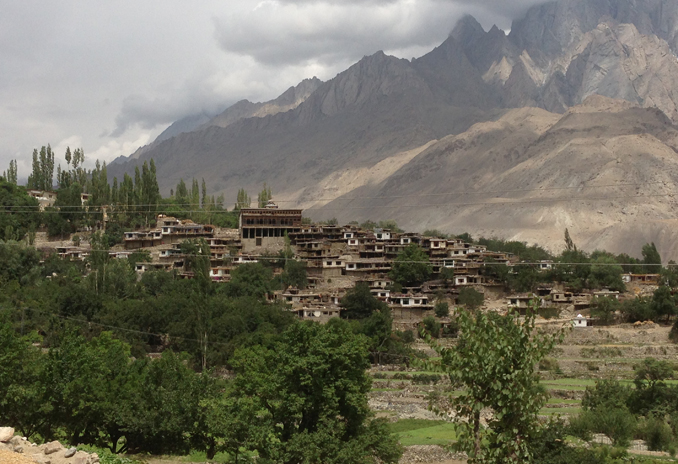 |
| A village in Baltistan |
The story of Afzal Rasool is the other beauty of the area. It is not just nature or history, but the kindness and hospitability of the people. It is the peaceful existence of their villages that win your heart and the only violence that exists is that of Mother Nature. Each village in Baltistan is unique, in the middle of barren mountains and miles of sand comes a small patch of greenery where communities have settled over centuries. And if anybody ever has the time, it is a must to visit and realize what the arms of history and nature hold, because it is the hidden beauty and secret of Pakistan.
You may also like: